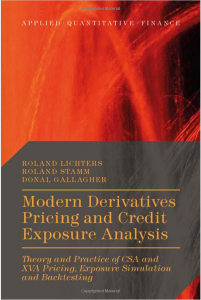Norwell, MA, February 4, 2021 – AcadiaSoft Inc., the leading industry provider of risk and collateral management services for the derivatives community, today announced it has acquired capital markets consulting and software company Quaternion. In conjunction with the transaction, which adds significant depth to AcadiaSoft’s risk product offerings, a new Quaternion division has been created, which will focus on providing derivatives market participants with a wide range of Analytics and Expert Services. The Quaternion division will be led by its co-founders, CEO Donal Gallagher and CTO Roland Lichters. The Quaternion offices will remain in place and its Ireland and Germany presence leveraged to serve the broader AcadiaSoft community within these regions.
“We are thrilled to have Donal, Roland and the talented team at Quaternion on board as we continue to build out our risk management suite,” said AcadiaSoft CEO Chris Walsh. “Quaternion has been a trusted partner in our risk mitigation and management offerings. Bringing these capabilities in-house will allow us to develop best-in-class products to optimize and centralize risk management. This exciting new chapter with Quaternion is a critical piece of the puzzle as we work towards creating an integrated, real- time risk management solution.”
The establishment of an Expert Services division will bring an experienced quantitative analyst team to the AcadiaSoft community, allowing clients to leverage domain expertise combined with a scalable product set. As the industry strives for more centralized and standardized risk services, AcadiaSoft clients will be able to leverage the Quaternion ORE open source framework to enable greater adoption of market standard risk calculators supporting initiatives like SIMMTM, SA-CCR, XVA calculation and other analytic services.
“AcadiaSoft and Quaternion share a strong commitment to developing integrated risk management solutions that will help the industry navigate the many regulatory and cost challenges it faces,” said Gallagher. “Becoming part of AcadiaSoft is a natural step for us and will allow us to provide clients with enhanced services, high-quality choices and the best value in the industry.”
Previously, AcadiaSoft partnered with Quaternion on multiple products within the Risk Suite, including IM Risk Generator, IM Backtesting & Benchmarking, and CSA Valuation Service. Following the acquisition, these services will be an integral part of the AcadiaPlus platform.
###
ABOUT ACADIASOFT
AcadiaSoft, Inc. is the leading industry provider of risk management services for the derivatives community. Its industry-wide repository of margin and collateral data helps firms to mitigate financial risk and optimize resources across the entire trade life cycle.
AcadiaSoft’s suite of analytics solutions and services helps firms measure the quantitative aspects of risk management. Through an open-access model, AcadiaSoft brings together the top derivatives banks and asset managers, along with several market infrastructures and innovative vendors.
Backed by 16 major industry participants and market infrastructures, AcadiaSoft is used by a community of over 1600 firms exchanging more than $1 trillion of collateral on daily basis via its margin automation services. AcadiaSoft is headquartered in Norwell, MA and has offices in Boston, Dublin, Dusseldorf, London, New York, and Tokyo. For more information, visit acadiasoft.com. Follow us on Twitter: https://twitter.com/AcadiaSoft_ and LinkedIn: https://www.linkedin.com/company/acadiasoft-inc/.
Contacts:
AcadiaSoft
Laura Craft
+44 20 3954 0196 [email protected]
Eleis Brennan
+1 212-754-5610 [email protected]

